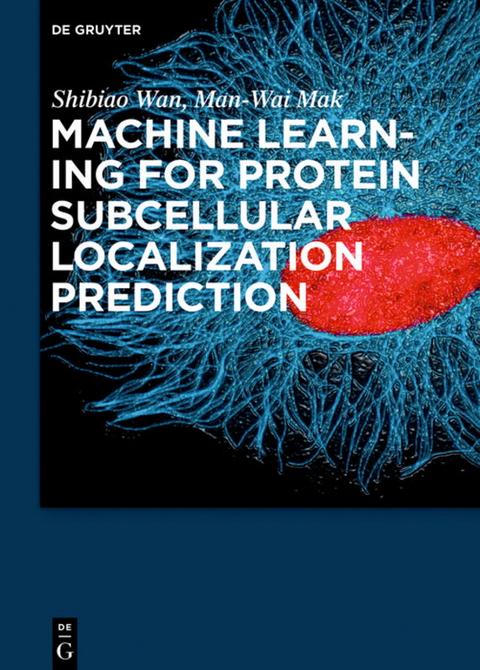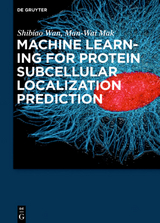Machine Learning for Protein Subcellular Localization Prediction
Comprehensively covers protein subcellular localization from single-label prediction to multi-label prediction, and includes prediction strategies for virus, plant, and eukaryote species. Three machine learning tools are introduced to improve classification refinement, feature extraction, and dimensionality reduction.
Shibiao Wan, Man-Wai Mak, Hong Kong Polytechnic University, Hong Kong.
1 Introduction
1.1 Proteins and Their Subcellular Locations
1.2 Why Computationally Predicting Protein Subcellular Localization?
1.3 Organization of The Thesis
2 Literature Review
2.1 Sequence-Based Methods
2.2 Knowledge-Based Methods
2.3 Limitations of Existing Methods
3 Legitimacy of Using Gene Ontology Information
3.1 Direct Table Lookup?
3.2 Only Using Cellular Component GO Terms?
3.3 Equivalent to Homologous Transfer?
3.4 More Reasons for Using GO Information
4 Single-Location Protein Subcellular Localization
4.1 GOASVM: Extracting GO from Gene Ontology Annotation Database
4.2 FusionSVM: Fusion of Gene Ontology and Homology-Based Features
4.3 Summary
5 From Single-Location to Multi-Location
5.1 Significance of Multi-Location Proteins
5.2 Multi-Label Classification
5.3 mGOASVM: A Predictor for Both Single- and Multi-Location Proteins
5.4 AD-SVM: An Adaptive-decision Multi-Label Predictor
5.5 mPLR-Loc: A Multi-Label Predictor Based on Penalized Logistic- Regression
5.6 Summary
6 Mining Deeper on GO for Protein Subcellular Localization
6.1 Related Work
6.2 SS-Loc: Using Semantic Similarity Over GO
6.3 HybridGO-Loc: Hybridizing GO Frequency and Semantic Similarity
Features
6.4 Summary
7 Ensemble Random Projection for Large-Scale Predictions
7.1 Related Work
7.2 RP-SVM: A Multi-Label Classifier with Ensemble Random Projection
7.3 R3P-Loc: A Predictor Based on Ridge Regression and Random
Projection
7.4 Summary
8 Experimental Setup
8.1 Prediction of Single-Label Proteins
8.2 Prediction of Multi-Label Proteins
8.3 Statistical Evaluation Methods
8.4 Summary
9 Results and Analysis
9.1 Performance of GOASVM
9.2 Performance of FusionSVM
9.3 Performance of mGOASVM
9.4 Performance of AD-SVM
9.5 Performance of mPLR-Loc
9.6 Performance of SS-Loc
9.7 Performance of HybridGO-Loc
9.8 Performance of Performance of RP-SVM
9.9 Performance of R3P-Loc
9.10 Comprehensive Comparison of Proposed Predictors
9.11 Summary
10 Discussions
10.1 Analysis of Single-label Predictors
10.2 Advantages of mGOASVM
10.3 Analysis for HybridGO-Loc
10.4 Analysis for RP-SVM
10.5 Comparing the Proposed Multi-Label Predictors
10.6 Summary
11 Conclusions
A Web-Servers for Protein Subcellular Localization
B Proof of No Bias in LOOCV
Bibliography
| Erscheint lt. Verlag | 24.4.2015 |
|---|---|
| Zusatzinfo | 35 Tables, black and white; 58 Illustrations, black and white |
| Verlagsort | Boston |
| Sprache | englisch |
| Maße | 170 x 240 mm |
| Gewicht | 495 g |
| Themenwelt | Mathematik / Informatik ► Informatik ► Datenbanken |
| Informatik ► Theorie / Studium ► Künstliche Intelligenz / Robotik | |
| Informatik ► Weitere Themen ► Bioinformatik | |
| Naturwissenschaften ► Biologie ► Biochemie | |
| Technik ► Nachrichtentechnik | |
| Schlagworte | Bioinformatics; Proteomics; Computer Science |
| ISBN-10 | 1-5015-1048-7 / 1501510487 |
| ISBN-13 | 978-1-5015-1048-9 / 9781501510489 |
| Zustand | Neuware |
| Informationen gemäß Produktsicherheitsverordnung (GPSR) | |
| Haben Sie eine Frage zum Produkt? |
aus dem Bereich




